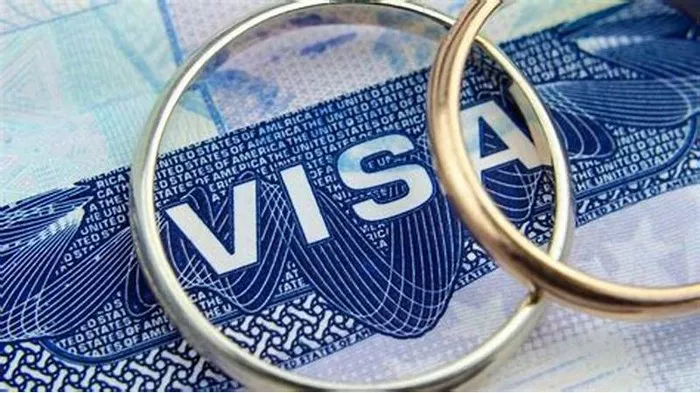Refugees, by definition, are individuals fleeing their home countries due to persecution, war, or violence. They seek safety and protection in other countries, often facing numerous challenges in the process. The concept of refugee status is deeply ingrained in international law, and the issuance of refugee visas serves as a vital tool in providing sanctuary to those in need. In this article, we delve into the intricacies of refugee visas, their purpose, eligibility criteria, application process, and the subsequent resettlement journey.
Definition of a Refugee Visa
1. Understanding Refugees:
To comprehend the essence of a refugee visa, one must first grasp the concept of a refugee. According to the United Nations Refugee Agency (UNHCR), a refugee is someone who has been forced to flee their country because of persecution, war, or violence. These individuals have a well-founded fear of persecution based on factors such as race, religion, nationality, political opinion, or membership in a particular social group.
2. Distinction Between Refugee and Immigrant:
While refugees and immigrants share the commonality of relocating to a foreign country, their motivations and legal statuses differ significantly. Refugees are compelled to flee their homelands due to imminent danger, whereas immigrants typically choose to move for reasons such as economic opportunities or family reunification. Additionally, refugees undergo a distinct legal process to obtain protection in another country, often necessitating the issuance of a refugee visa.
3. Purpose of a Refugee Visa:
A refugee visa serves as a gateway to safety and protection for individuals fleeing persecution in their home countries. It allows refugees to legally enter another nation and seek asylum, providing them with a legal status that safeguards against deportation to their country of origin. Moreover, a refugee visa facilitates access to essential services, such as healthcare and education, while refugees await a durable solution, whether it be resettlement, repatriation, or local integration.
Eligibility Criteria
1. International and National Laws:
The eligibility criteria for refugee status are primarily governed by international treaties, such as the 1951 Refugee Convention and its 1967 Protocol, as well as national laws of receiving countries. These criteria typically encompass the following key elements:
Well-Founded Fear: Applicants must demonstrate a well-founded fear of persecution in their home country due to factors such as race, religion, nationality, political opinion, or membership in a particular social group.
Non-Availability of Protection: Refugees are those who are unable or unwilling to avail themselves of the protection of their home country due to the fear of persecution.
Individual Assessment: Each case is evaluated on its own merits, with authorities considering the unique circumstances and credible evidence presented by the applicant.
2. Persecution and Fear of Harm:
Refugee status is often granted to individuals who have experienced or have a well-founded fear of persecution or serious harm in their home country. This persecution may manifest in various forms, including imprisonment, torture, discrimination, or targeted violence.
3. Application of Gender and LGBTQ+ Asylum Seekers:
Special consideration is given to vulnerable populations, such as women, children, and LGBTQ+ individuals, who may face specific forms of persecution. Discrimination based on gender identity or sexual orientation can also be grounds for refugee status, acknowledging the unique challenges and risks faced by these communities.
Application Process
1. UNHCR and National Immigration Authorities:
The application process for refugee status typically involves collaboration between international organizations like the UNHCR and national immigration authorities. The UNHCR plays a crucial role in assessing refugee claims, providing protection, and facilitating resettlement in partnership with host countries.
2. Asylum Procedures:
Refugees often apply for asylum upon arrival in a host country or through designated asylum offices. The application process typically includes submitting detailed information about one’s background, experiences of persecution, and reasons for seeking refuge. Applicants may undergo interviews, screenings, and background checks to assess the credibility of their claims.
3. Legal Representation and Assistance:
Legal aid organizations and refugee advocacy groups often offer support to asylum seekers throughout the application process, helping them navigate complex legal procedures, understand their rights, and prepare compelling asylum claims.
Resettlement Process
1. Safe Country Resettlement:
Once refugee status is granted, individuals may be eligible for resettlement to a safe third country willing to accept them. Resettlement offers refugees the opportunity for a fresh start in a secure environment, away from the dangers t
hey faced in their home countries or countries of first asylum.
2. Integration and Support Services:
Upon arrival in the resettlement country, refugees receive various forms of support to facilitate their integration and self-sufficiency. This support may include housing assistance, language classes, job training, healthcare services, and cultural orientation programs.
3. Community Engagement and Empowerment:
Local communities, non-governmental organizations (NGOs), and government agencies play integral roles in welcoming and supporting refugees during the resettlement process. Community engagement initiatives promote social inclusion, foster cultural exchange, and empower refugees to rebuild their lives with dignity and resilience.
Conclusion
In conclusion, a refugee visa symbolizes hope and protection for those fleeing persecution and violence. By adhering to international and national laws, providing a fair and transparent application process, and offering comprehensive support during resettlement, countries can uphold their humanitarian obligations and offer refuge to those in need. As we navigate the complexities of forced displacement and global migration, the issuance of refugee visas remains a vital mechanism in safeguarding the rights and dignity of vulnerable populations worldwide.


